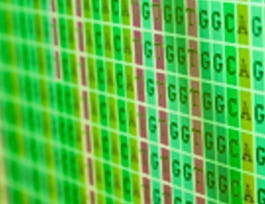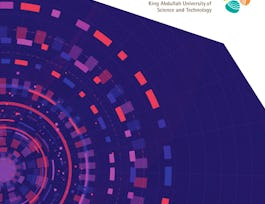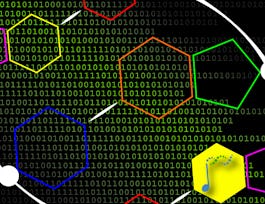Large-scale biology projects such as the sequencing of the human genome and gene expression surveys using RNA-seq, microarrays and other technologies have created a wealth of data for biologists. However, the challenge facing scientists is analyzing and even accessing these data to extract useful information pertaining to the system being studied. This course focuses on employing existing bioinformatic resources – mainly web-based programs and databases – to access the wealth of data to answer questions relevant to the average biologist, and is highly hands-on.

Offrez à votre carrière le cadeau de Coursera Plus avec $160 de réduction, facturé annuellement. Économisez aujourd’hui.


Bioinformatic Methods II
Ce cours fait partie de Spécialisation Plant Bioinformatic Methods

Instructeur : Nicholas James Provart
35 486 déjà inscrits
Inclus avec 
(479 avis)
Détails à connaître

Ajouter à votre profil LinkedIn
9 devoirs
Découvrez comment les employés des entreprises prestigieuses maîtrisent des compétences recherchées

Élaborez votre expertise du sujet
- Apprenez de nouveaux concepts auprès d'experts du secteur
- Acquérez une compréhension de base d'un sujet ou d'un outil
- Développez des compétences professionnelles avec des projets pratiques
- Obtenez un certificat professionnel partageable


Obtenez un certificat professionnel
Ajoutez cette qualification à votre profil LinkedIn ou à votre CV
Partagez-le sur les réseaux sociaux et dans votre évaluation de performance

Il y a 8 modules dans ce cours
In this module we'll be exploring conserved regions within protein families. Such regions can help us understand the biology of a sequence, in that they are likely important for biological function, and also be used to help ascribe function to sequences where we can't identify any homologs in the databases. There are various ways of describing the conserved regions from simple regular expressions to profiles to profile hidden Markov models (HMMs).
Inclus
4 vidéos4 lectures1 devoir
In this module we'll be exploring protein-protein interactions (PPIs). Protein-protein interactions are important as proteins don't act in isolation, and often an examination of the interaction partners (determined in an unbiased, perhaps high throughput way) of a given protein can tell us a lot about its biology. We'll talk about some different methods used to determine PPIs and go over their strengths and weaknesses. In the lab we'll use 3 different tools and two different databases to examine interaction partners of BRCA2, a protein that we examined in last module's lab. Finally, we'll touch on a "foundational" concept, Gene Ontology (GO) term enrichment analysis, to help us understand in an overview way the proteins interacting with our example.
Inclus
4 vidéos2 lectures1 devoir
The determination of a protein's tertiary structure in three dimensions can tell us a lot about the biology of that protein. In this module's mini-lecture, we'll talk about some different methods used to determine a protein's tertiary structure and cover the main database for protein structure data, the PDB. In the lab we'll explore the PDB and an online tool for searching for structural (as opposed to sequence) similarity, VAST. We'll then use a nice piece of stand-alone software, PyMOL, to explore several protein structures in more detail.
Inclus
4 vidéos2 lectures1 devoir
Inclus
1 devoir
When and where genes are expressed (active) in tissues or cells is one of the main determinants of what makes that tissue or cell the way it is, both in terms of morphology and in terms of response to external stimuli. Several different methods exist for generating gene expression levels for all of the genes in the genome in tissues or even at cell-type-specific resolution. In this class we'll be processing and then examining some gene expression data generated using RNA-seq. We'll explore one of the main databases for RNA-seq expression data, the Sequence Read Archive (SRA), and then use an open-source suite of programs in R called BioConductor to process the raw reads from 4 RNA-seq data sets, to summarize their expression levels, to select significantly differentially expressed genes, and finally to visualize these as a heat map.
Inclus
4 vidéos2 lectures1 devoir
When and where genes are expressed (active) in tissues or cells is one of the main determinants of what makes that tissue or cell the way it is, both in terms of morphology and in terms of response to external stimuli. Several different methods exist for generating gene expression levels for all of the genes in the genome in tissues or even at cell-type-specific resolution. In this class we'll be hierarchically clustering our significantly differentially expressed genes from last time using BioConductor and the built-in function of an online tool, called Expression Browser. Then we'll be using another online tool that uses a similarity metric, the Pearson correlation coefficient, to identify genes responding in a similar manner to our gene of interest, in this case AP3. We'll use a second tool, ATTED-II to corroborate our gene list. We'll also be exploring some online databases of gene expression and an online tool for doing a Gene Ontology enrichment analysis.
Inclus
4 vidéos2 lectures1 devoir
When and where genes are expressed in tissues or cells is one of the main determinants of what makes that tissue or cell the way it is, both in terms of morphology and in terms of response to external stimuli. Gene expression is controlled in part by the presence of short sequences in the promoters (and other parts) of genes, called cis-elements, which permit transcription factors and other regulatory proteins to bind to direct the patterns of expression in certain tissues or cells or in response to environmental stimuli: We'll explore a couple of sets of promoters of genes that are coexpressed with AP3 from Arabidopsis, and with INSULIN from human, for the presence of known cis-elements, and we'll also try to predict some new ones using a couple of different methods.
Inclus
4 vidéos2 lectures1 devoir
Inclus
1 lecture2 devoirs
Instructeur

Offert par
Recommandé si vous êtes intéressé(e) par Health Informatics

University of Toronto

University of California San Diego

King Abdullah University of Science and Technology

Johns Hopkins University
Pour quelles raisons les étudiants sur Coursera nous choisissent-ils pour leur carrière ?




Avis des étudiants
Affichage de 3 sur 479
479 avis
- 5 stars
77,45 %
- 4 stars
20,45 %
- 3 stars
1,46 %
- 2 stars
0,62 %
- 1 star
0 %

Ouvrez de nouvelles portes avec Coursera Plus
Accès illimité à plus de 7 000 cours de renommée internationale, à des projets pratiques et à des programmes de certificats reconnus sur le marché du travail, tous inclus dans votre abonnement
Faites progresser votre carrière avec un diplôme en ligne
Obtenez un diplôme auprès d’universités de renommée mondiale - 100 % en ligne
Rejoignez plus de 3 400 entreprises mondiales qui ont choisi Coursera pour les affaires
Améliorez les compétences de vos employés pour exceller dans l’économie numérique
Foire Aux Questions
Access to lectures and assignments depends on your type of enrollment. If you take a course in audit mode, you will be able to see most course materials for free. To access graded assignments and to earn a Certificate, you will need to purchase the Certificate experience, during or after your audit. If you don't see the audit option:
The course may not offer an audit option. You can try a Free Trial instead, or apply for Financial Aid.
The course may offer 'Full Course, No Certificate' instead. This option lets you see all course materials, submit required assessments, and get a final grade. This also means that you will not be able to purchase a Certificate experience.
When you enroll in the course, you get access to all of the courses in the Specialization, and you earn a certificate when you complete the work. Your electronic Certificate will be added to your Accomplishments page - from there, you can print your Certificate or add it to your LinkedIn profile. If you only want to read and view the course content, you can audit the course for free.
If you subscribed, you get a 7-day free trial during which you can cancel at no penalty. After that, we don’t give refunds, but you can cancel your subscription at any time. See our full refund policy.

